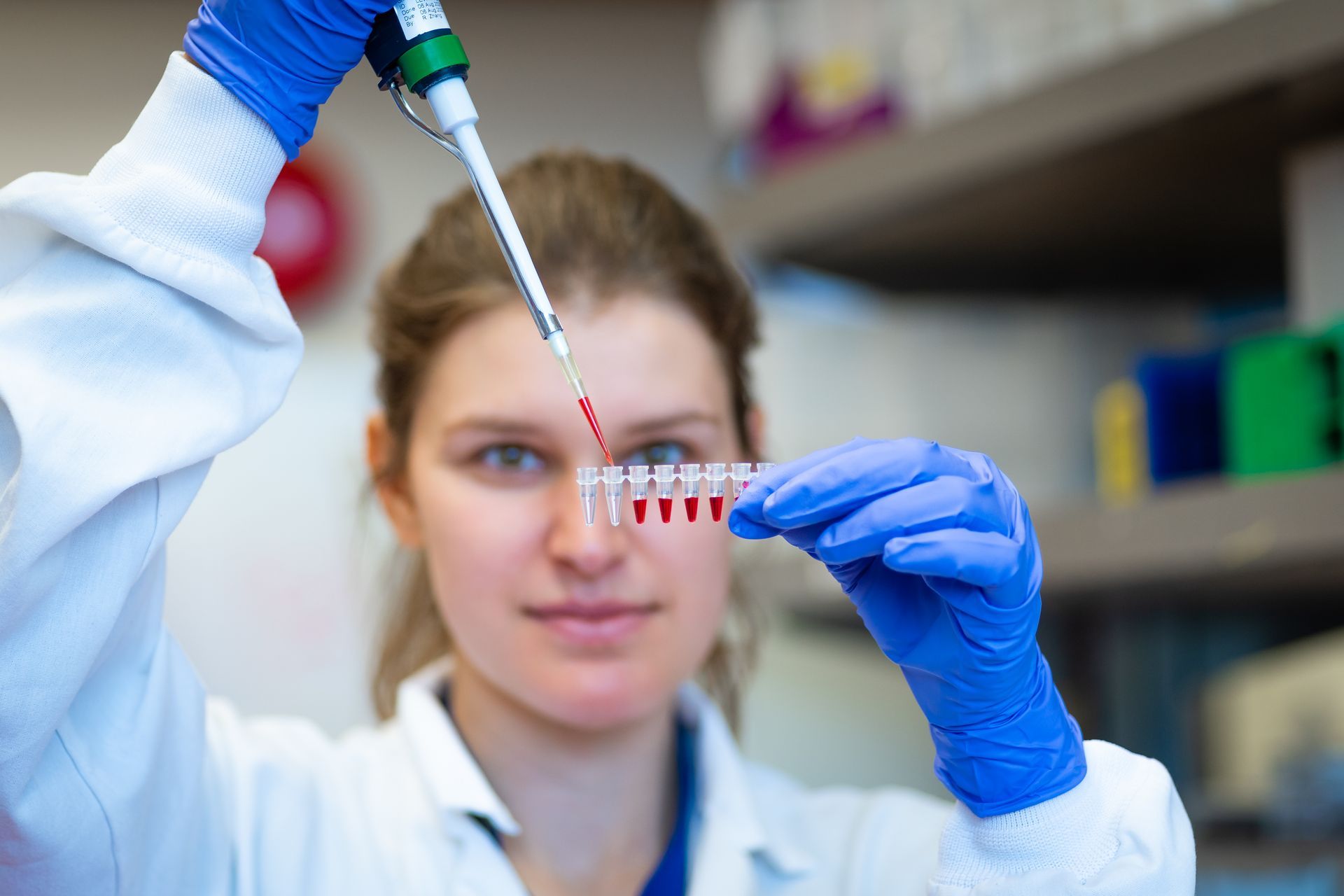Blog
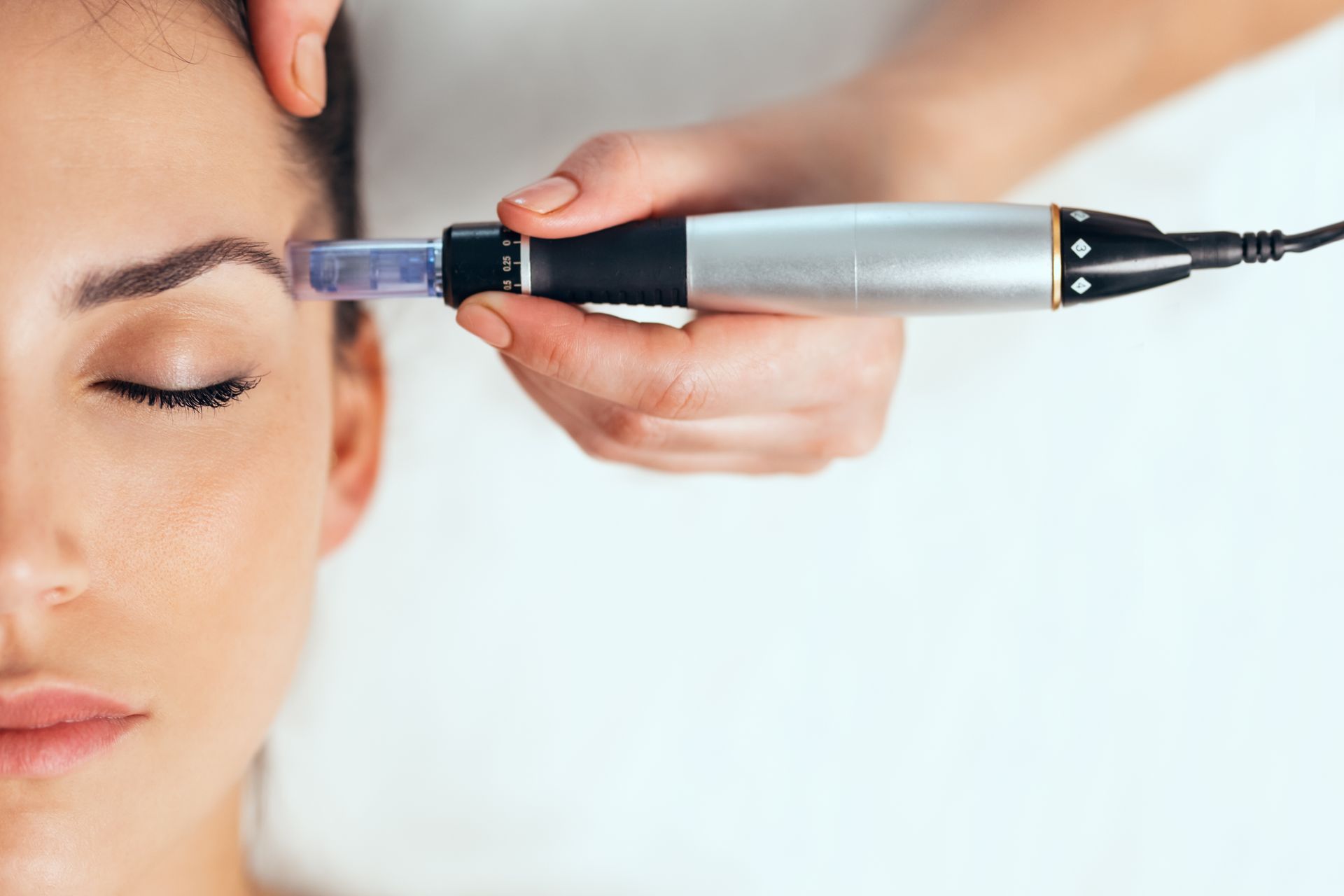
In recent years, the demand for non-surgical aesthetic treatments has surged as people seek effective, minimally invasive solutions to enhance their skin’s health and appearance. Among the most promising advancements in this field is the combination of radiofrequency (RF) microneedling and platelet-rich plasma (PRP). This treatment is redefining skin rejuvenation, offering powerful results with minimal downtime. Below, we explore the science, benefits, and future potential of RF microneedling with PRP. The Science Behind RF Microneedling and PRP Radiofrequency microneedling combines two proven technologies to rejuvenate the skin. The treatment uses fine needles to create microchannels in the skin while simultaneously delivering controlled RF energy to the deeper layers of the dermis. This process stimulates collagen and elastin production, essential proteins for maintaining firm, youthful skin. The thermal energy from RF further enhances skin tightening by promoting tissue remodeling. Platelet-rich plasma (PRP) therapy complements RF microneedling by using the body’s natural healing mechanisms. PRP is derived from the patient’s blood and is rich in growth factors and bioactive proteins that accelerate tissue repair and regeneration. When applied to the skin after microneedling, PRP penetrates the microchannels, enhancing the healing process and amplifying collagen production. Together, RF microneedling and PRP create a powerful synergy that delivers superior skin rejuvenation results. The Benefits of Combining RF Microneedling and PRP The combined treatment of RF microneedling with PRP addresses a wide range of skin concerns, making it a versatile option for various patients. Some of the key benefits include: Enhanced Skin Texture and Tone: The treatment reduces the appearance of fine lines, wrinkles, and large pores while improving overall skin texture and tone. It’s particularly effective for smoothing acne scars and other textural irregularities. Increased Collagen Production: RF microneedling stimulates deep collagen production , which is further boosted by the growth factors in PRP. This dual approach promotes long-term skin firmness and elasticity. Reduction in Skin Discoloration: The procedure can help fade hyperpigmentation and sunspots, leading to a more even complexion. Minimized Downtime: While traditional treatments may require extended recovery periods, RF microneedling with PRP offers minimal downtime. Most patients experience mild redness and swelling for only a day or two. Natural Results: Since PRP is derived from the patient’s blood, the treatment is biocompatible and minimizes the risk of adverse reactions. The results develop gradually, giving the skin a natural and refreshed appearance. Applications for RF Microneedling with PRP The versatility of RF microneedling with PRP makes it suitable for treating a variety of skin concerns. Some of its most popular applications include: Acne and Surgical Scars: The treatment stimulates tissue remodeling, reducing the appearance of scars by encouraging new, healthy skin growth. Fine Lines and Wrinkles: By promoting collagen and elastin production, RF microneedling with PRP softens the appearance of wrinkles and improves skin elasticity. Skin Laxity: The thermal energy from RF tightens loose skin, making it an excellent option for patients seeking a non-surgical facelift alternative. Stretch Marks: The procedure can improve the appearance of stretch marks by encouraging the production of new collagen in affected areas. Uneven Skin Tone: PRP’s regenerative properties help to fade dark spots and pigmentation irregularities, leading to a more even complexion. The Future of Aesthetic Treatments As technology and medical science continue to advance, RF microneedling with PRP is becoming a cornerstone of aesthetic medicine . Ongoing research aims to enhance the efficacy and accessibility of these treatments, making them even more appealing to a broader audience. Future innovations may include the development of more precise RF devices that deliver energy with greater accuracy, reducing discomfort and improving results. Additionally, advancements in PRP extraction techniques could lead to formulations with higher concentrations of growth factors, further amplifying the treatment’s regenerative effects. Another exciting prospect is the integration of artificial intelligence and imaging technologies to customize treatments for individual patients. By analyzing skin characteristics and predicting outcomes, practitioners could tailor RF microneedling and PRP protocols to maximize effectiveness and meet each patient’s unique needs. In conclusion, RF microneedling with PRP represents a significant leap forward in non-surgical skin rejuvenation. By combining cutting-edge technology with the body’s natural healing processes, this treatment offers a safe, effective, and minimally invasive solution for a wide range of skin concerns. As the field continues to evolve, it’s clear that RF microneedling with PRP will play a vital role in shaping the future of aesthetic medicine, providing patients with transformative results and renewed confidence in their skin. Contact P4 Biologix for Regenerative Medicine Products P4 Biologix is your trusted source for advanced regenerative medicine products, including Platelet-Rich Plasma (PRP) solutions. Whether you're seeking innovative treatments for pain management, injury recovery, or aesthetic applications, our cutting-edge PRP products are designed to support your needs. With a commitment to quality and excellence, P4 Biologix provides healthcare professionals with reliable solutions to enhance patient outcomes. Contact us today to learn more about our regenerative medicine offerings and how we can assist in delivering superior care.

Platelet-Rich Plasma (PRP) therapy is gaining popularity in the field of veterinary medicine as a non-invasive treatment option with numerous benefits. This innovative technique uses the animal's own blood to promote healing and alleviate pain, making it a safe and effective alternative to traditional medications or surgeries. From joint issues to skin conditions, PRP therapy has shown promising results in improving the overall well-being and quality of life for our beloved pets. In this blog, we will explore the various benefits of Platelet-Rich Plasma therapy in veterinary treatments and how it can revolutionize the way we care for our furry companions. What is Platelet-Rich Plasma (PRP) in Veterinary Medicine? Platelet-Rich Plasma (PRP) is a regenerative therapy derived from a patient’s own blood, rich in platelets and growth factors that promote tissue repair, reduce inflammation, and encourage new cell growth. It is widely used in veterinary medicine to treat conditions such as ligament, tendon, and joint injuries, as well as osteoarthritis, where it reduces inflammation and improves joint function. PRP also accelerates wound healing, addresses soft tissue injuries like muscle and tendon tears, and supports the recovery of burns, ulcers, and surgical wounds. Additionally, it enhances healing in dental and oral surgeries, such as after extractions or jaw procedures, making it a versatile tool in veterinary care. How PRP is Prepared and Its Benefits To prepare PRP, a veterinarian draws blood from the animal, centrifuges it to concentrate the platelets, and then applies or injects the PRP directly into the treatment area. This therapy is safe and natural, with minimal risk of allergic reactions since it uses the patient’s own blood. PRP promotes healing, reduces pain and inflammation, and is minimally invasive, offering a valuable alternative or complement to surgery. Commonly used in dogs, cats, and horses , and occasionally in exotic animals, PRP treatments are customized based on the specific needs of the animal and the condition being treated. Minimized Risk of Infection Platelet-Rich Plasma therapy in veterinary treatments reduces the risk of infection due to its autologous nature – using the animal's own blood. This decreases the likelihood of adverse reactions or complications from foreign substances, making it a safe option for your pet. By utilizing PRP therapy, veterinarians can avoid introducing any harmful pathogens that may be present in donor blood products. The isolation and concentration process involved in creating PRP helps to ensure a sterile and pure final product, further minimizing the chances of infection. Overall, opting for Platelet-Rich Plasma therapy can provide peace of mind knowing that your furry friend is receiving a treatment with a reduced risk of infection. Long-Term Cost Savings Platelet-Rich Plasma therapy may initially seem more expensive than traditional treatments, but in the long run, it can save pet owners money. By promoting faster healing and reducing the need for costly medications or surgeries, PRP therapy can prevent future medical expenses. Veterinarians often recommend PRP therapy as a cost-effective alternative to invasive procedures that may require repeat visits and extensive rehabilitation. With fewer complications and shorter recovery times, pets can return to normal activities sooner, saving owners time and money on follow-up appointments. Contact P4 Biologix for Regenerative Medicine Products Elevate the care you provide to veterinary patients with the cutting-edge regenerative medicine solutions from P4 Biologix . Our advanced Platelet-Rich Plasma (PRP) products are designed to support natural healing and recovery, helping animals achieve optimal health and mobility. Whether you're a veterinarian seeking innovative treatment options or an animal lover looking for effective solutions, P4 Biologix has you covered. Contact us today to learn how our PRP products can make a difference in the lives of the animals you care for.
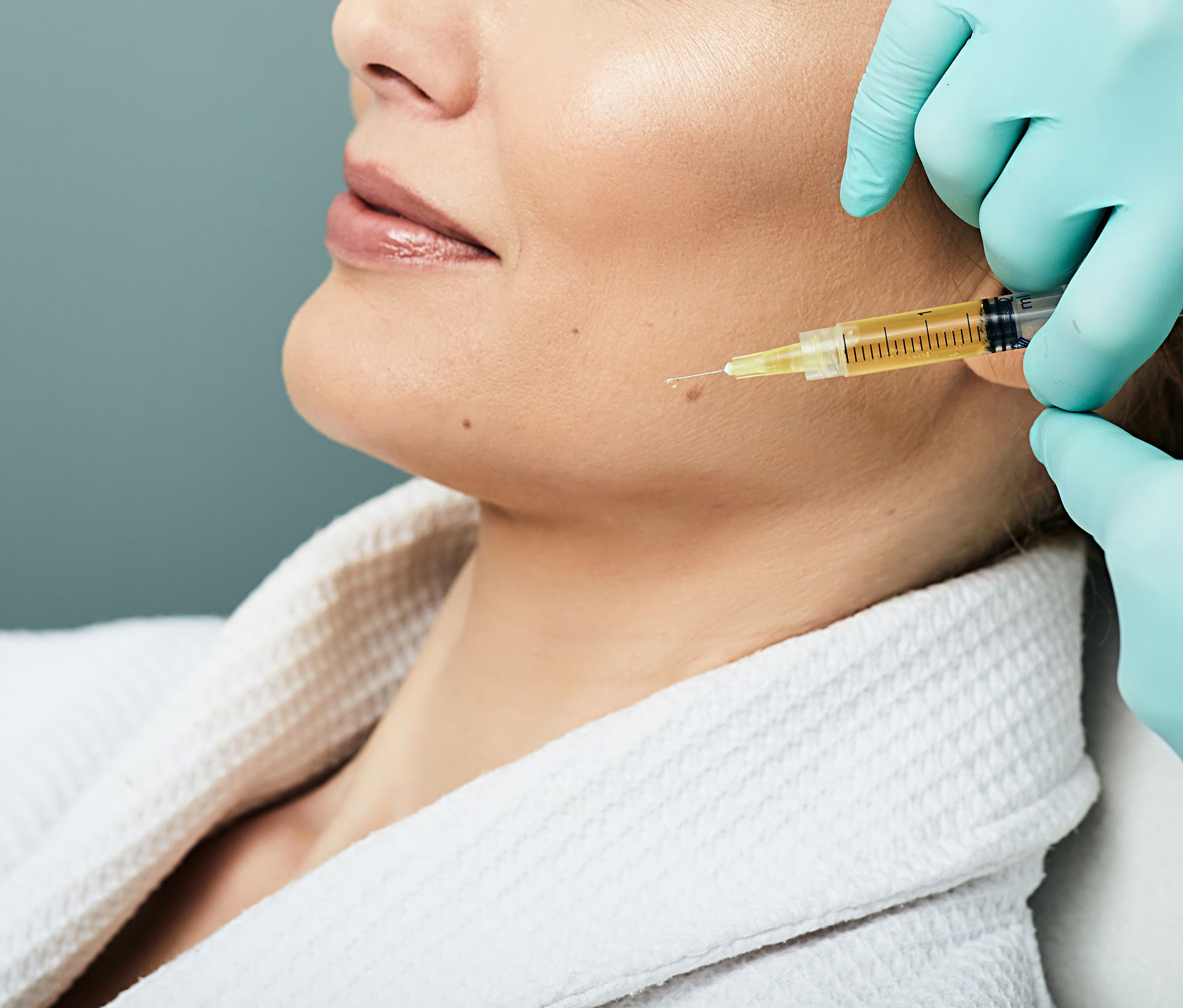
Platelet-rich plasma (PRP) therapy has gained popularity in recent years as a non-invasive, natural treatment option for a variety of conditions, including hair loss, joint pain, and skin rejuvenation. However, one common question that arises among individuals considering PRP treatment is: how many sessions are necessary to achieve optimal results? In this blog, we will discuss the number of PRP treatments needed for each specific condition, as well as provide guidance on what patients can expect when undergoing this innovative regenerative medicine . By understanding the nuances of PRP treatment protocols, individuals can make informed decisions about their healthcare journey and achieve the best possible outcomes. Factors that Influence the Number of PRP Treatments Needed Severity of the Condition : The more severe your condition is, the more PRP treatments you may require. Chronic conditions or injuries may need multiple sessions to see significant improvement. Response to Treatment : Everyone responds differently to PRP therapy. Some individuals may see results after just one treatment, while others may need several sessions for optimal outcomes. Underlying Health Factors : Your overall health plays a role in how many PRP treatments you will need. Factors such as age, nutrition, and any underlying medical conditions can impact the effectiveness of the treatment. Typical Treatment Plans for Hair Loss, Joint Pain, and Skin Rejuvenation Hair Loss : For hair loss, the typical treatment plan involves a series of PRP injections administered to the scalp. Most patients see optimal results with 3-4 treatments spaced every 4-6 weeks apart. These treatments help stimulate hair follicles and promote hair growth, leading to thicker and healthier-looking hair. Joint Pain : Those seeking relief from joint pain often benefit from a similar approach with PRP injections targeted at the affected joints. The number of treatments can vary depending on the severity of the condition but typically ranges from 1-3 sessions. With each session, the concentrated platelets in PRP work to reduce inflammation and promote tissue repair within the joint, alleviating pain and improving mobility. Skin Rejuvenation : To rejuvenate facial skin or address specific skin concerns like acne scars or wrinkles, multiple PRP treatment sessions are usually recommended. Patients may undergo anywhere from 2-4 treatments for optimal results. During these sessions, PRP is applied topically or injected into areas needing improvement. The growth factors in PRP help enhance collagen production and improve overall skin texture and tone. Signs that More PRP Treatments may be Necessary Lack of improvement in the treated area : If you are not seeing the desired results in terms of pain relief or tissue regeneration after undergoing PRP treatment, it may be a sign that additional treatments are needed. Recurrence of symptoms : If your initial symptoms return after a period of relief following PRP therapy, this could indicate that the effects of the treatment were temporary and more sessions may be required to achieve lasting benefits. Slow healing process : If you are experiencing delays in healing from an injury or surgery despite undergoing PRP treatment, it might suggest that further treatments are necessary to facilitate a faster and more effective recovery. Tips for Maximizing the Benefits of PRP Therapy Follow your healthcare provider's post-treatment instructions diligently. Stay hydrated and maintain a healthy diet to support the healing process. Avoid smoking and excessive alcohol consumption, as these can hinder results. Platelet-rich plasma therapy requires patience. Results may vary, so be prepared for gradual improvements over time. Be consistent with appointments and trust the process. Remember that everyone responds differently to treatment, so stay positive and committed to achieving optimal results. Let P4 Biologix Enhance Treatment Outcomes for Your Patients with PRP Therapy Take your patient care to the next level with PRP from P4 Biologix . By utilizing the body’s natural healing properties, PRP can accelerate recovery, reduce pain, and improve overall treatment outcomes. Whether you’re looking for skin rejuvenation, wound healing, joint and chronic pain, surgical recovery, or more, PRP therapy offers a natural, effective solution. P4 Biologix offers products such as PRP tubes and kits, PRF tubes, and centrifuges to medical doctors and nurses to help improve treatment outcomes. Contact us today to start incorporating this powerful, regenerative treatment into your practice and provide your patients with the advanced care they deserve.
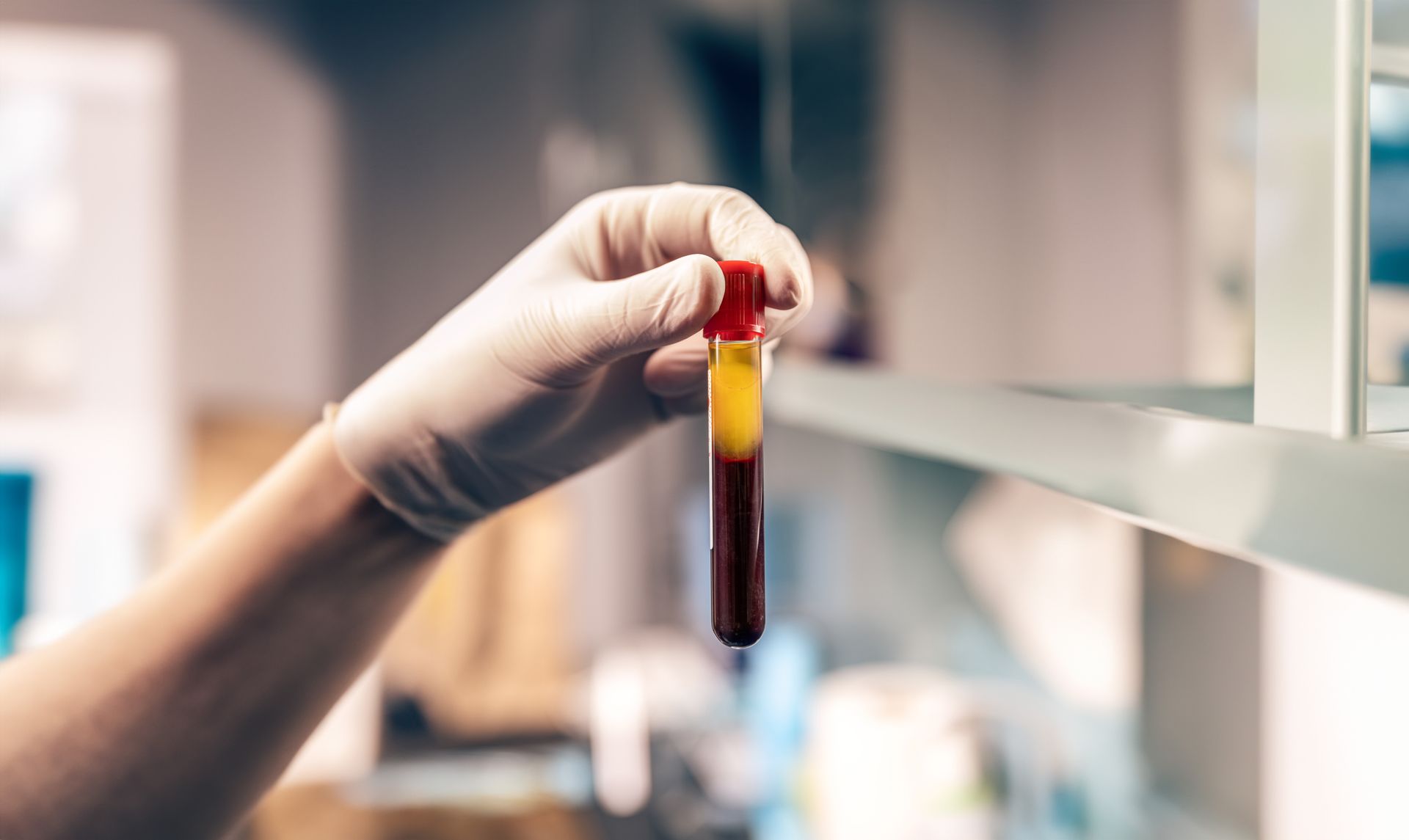
Platelet Rich Fibrin , also known as PRF, is a revolutionary treatment in the field of regenerative medicine. It has gained immense popularity for its ability to accelerate the body's natural healing process and promote tissue regeneration. But have you ever wondered how this remarkable substance is actually obtained? In this blog, we will look into the science behind Platelet Rich Fibrin and uncover the process through which it is extracted from a patient's own blood. By understanding the step-by-step procedure involved in obtaining PRF, we can gain a deeper appreciation for its therapeutic potential and how it is transforming modern healthcare practices. The Role of Blood Collection in PRF Extraction Blood collection is the first crucial step in extracting Platelet Rich Fibrin (PRF). A small amount of blood, typically around 10-20 milliliters, is drawn from the patient’s arm. This blood contains platelets, leukocytes , and growth factors in the fibrin matrix, essential for PRF formation. The process must be done carefully to ensure quality PRF: The blood sample should not be hemolyzed or contaminated during collection. Proper handling techniques are required to prevent clotting before processing begins. Time-sensitive procedures guarantee optimal platelet concentration levels in the final PRF product. Ultimately, meticulous attention to detail during blood collection sets the foundation for successful and effective PRF extraction. The Centrifugation Process: Separating Platelets from Plasma In the centrifugation process, a medical professional takes a blood sample and places it into a centrifuge machine. This machine spins the sample at high speeds, causing the different components of the blood to separate based on their density. Red blood cells, which are dense and heavy, move towards the bottom of the tube during this process. After centrifugation, three distinct layers can be observed in the tube. At the top is plasma, which is rich in water, albumin, and fibrinogen. In the middle is a thin layer called "buffy coat," consisting mainly of platelets and white blood cells. At the bottom lies red blood cells that have been separated out due to their density difference from platelets. This separation technique allows for easy extraction of platelet-rich fibrin (PRF), as healthcare providers can carefully collect just the buffy coat layer containing concentrated platelets for use in procedures like PRP therapy or wound healing applications. Factors Affecting PRF Quality and Yield Blood Collection Technique : The method used to collect blood plays a critical role in determining the quality and yield of PRF. Proper technique ensures minimal trauma to the blood cells, resulting in higher platelet concentrations. Centrifugation Speed and Time : The centrifugation process must be precise to separate the different components of blood effectively. Variations in speed and time can lead to lower PRF quality or yield. Patient Characteristics : Individual factors such as age, overall health, and genetics can impact the composition of PRF. Younger patients typically have better quality PRF due to more robust platelet function. Clinical Applications and Benefits of Platelet Rich Fibrin Platelet Rich Fibrin (PRF) has various clinical applications in the field of dentistry. It is commonly used for bone regeneration, soft tissue healing, and enhancing the success rate of dental implants. PRF promotes faster wound healing due to its rich concentration of growth factors, which stimulate cell proliferation and tissue repair. Benefits of using PRF in dental procedures include reduced inflammation, minimal scarring, and improved overall healing outcomes. Unlike synthetic materials, PRF is derived from a patient's blood, making it a safe and biocompatible option for treatment. The natural properties of PRF make it an attractive choice for patients seeking efficient and effective solutions for their oral health needs. In addition to its regenerative properties, studies have shown that PRF can also aid in reducing pain perception post-operatively by promoting tissue repair and reducing inflammation at the surgical site. This makes it a valuable tool in providing patients with optimal comfort during their recovery period after dental procedures. Let P4 Biologix Provide Regenerative Medicine Solutions Allow P4 Biologix to bring cutting-edge regenerative medicine solutions to your office! We specialize in PRF (Platelet-Rich Fibrin), PRFM (Platelet-Rich Fibrin Matrix), and PRP (Platelet-Rich Plasma) products, designed to help your clinic enhance healing and improve patient outcomes. With our advanced products and expert support, you can elevate your practice and offer innovative treatments for wounds, aesthetics, sports injuries, dental services , surgical recovery, and more! Contact us today to learn more about the different treatment options for your patients.
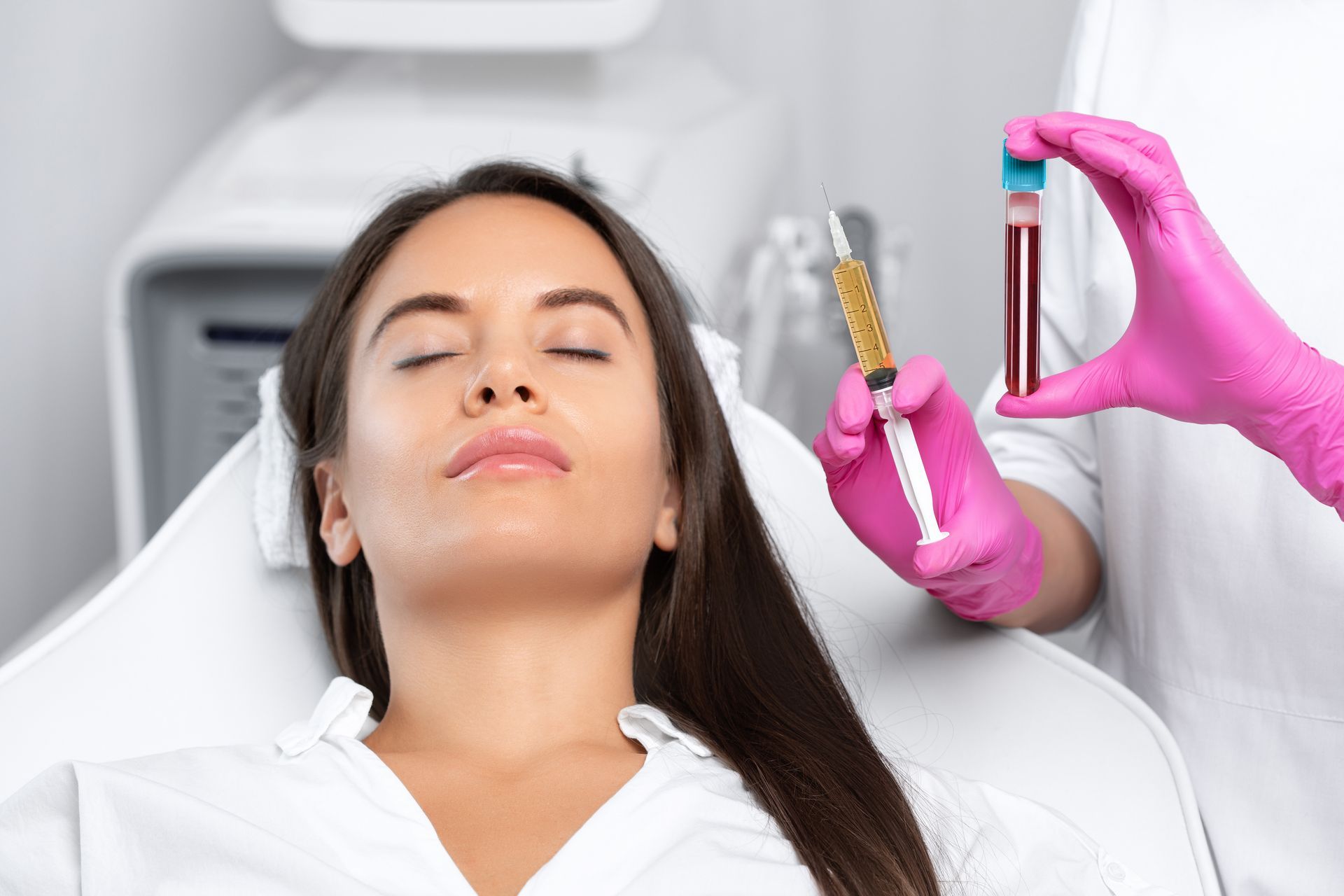
Platelet-rich plasma (PRP), platelet-rich fibrin (PRF), and platelet-rich fibrin matrix (PRFM) procedures have become increasingly popular in the field of regenerative medicine. These innovative treatments harness the power of our body's own growth factors to promote healing and regeneration in various tissues. However, one common question that patients often have is how long it will take for them to see results after undergoing these procedures. In this blog, we will delve into the recovery times associated with PRP, PRF, and PRFM treatments to give you a clear understanding of what to expect post-procedure. Whether you are considering these therapies for skin rejuvenation, hair restoration, or joint pain relief, knowing the expected recovery times can help you plan your treatment journey effectively. Join us as we explore the ultimate guide to recovery times for PRP, PRF, and PRFM procedures. Understanding Platelet-Rich Plasma Recovery Time Platelet-rich plasma (PRP) recovery time varies depending on the specific procedure and individual factors such as age, overall health, and the area being treated. In general, most patients can expect to see initial results within a few weeks of their PRP treatment. However, full recovery and optimal results may take anywhere from several weeks to several months. Factors such as adherence to post-treatment care instructions, frequency of treatments, and any underlying medical conditions can also impact how quickly a patient recovers from PRP therapy. It is important for patients to communicate openly with their healthcare provider about any concerns or changes they experience during the recovery period. Navigating the PRF Healing Duration Patience is Key : When undergoing PRF procedures, it's important to remember that healing takes time. Unlike quick fixes, these treatments promote natural regeneration within the body, which requires patience for optimal results. Expect Variability : The healing duration for PRF procedures can vary from person to person depending on factors such as age, overall health, and the specific treatment area. It's crucial to follow post-procedure care guidelines provided by your healthcare provider to support a smooth recovery process. Stay in Communication : Throughout your healing journey, maintain open communication with your healthcare provider about any concerns or questions you may have regarding your recovery progress. They can offer guidance and reassurance as you navigate the PRF healing duration towards a successful outcome. Managing the PRFM Recovery Period Follow post-procedure care instructions : Make sure to adhere to the specific guidelines provided by your healthcare provider after undergoing a PRFM procedure. This may include avoiding certain activities, using recommended skincare products, and attending follow-up appointments. Stay hydrated and eat healthily : Drinking plenty of water and maintaining a nutritious diet can help support the body's healing process following PRFM treatment. Opt for foods rich in vitamins, minerals, and antioxidants to promote skin rejuvenation from within. Protect your skin : Shield your skin from excessive sun exposure by wearing sunscreen and protective clothing. Avoid harsh chemicals or abrasive treatments that could irritate sensitive areas treated with PRFM. By taking these precautions, you can optimize the results of your procedure and ensure a smooth recovery period. Key Takeaways for Long-Term Results PRP : Results generally last 6 months to a year, and periodic treatments may be necessary for maintenance, especially for hair restoration and chronic joint injuries. PRF : Produces longer-lasting effects due to its slower release of growth factors. Results can last 12–18 months, with fewer touch-ups needed for facial rejuvenation or hair restoration. PRFM : Offers the longest-lasting effects due to its dense fibrin matrix, with results lasting up to 18 months or longer in many cases. Maintenance treatments are typically required every year or so for optimal results. Each individual’s results can vary based on factors such as age, lifestyle, severity of the condition, and overall health, so it’s important to have realistic expectations and follow up with your provider for periodic evaluations. Provide Advanced Healing with Regenerative Medicine Solutions from P4 Biologix At P4 Biologix, we combine over 70 years of expertise in customer service with cutting-edge regenerative medicine to help healthcare professionals deliver advanced patient care. We offer natural, research-driven solutions designed to accelerate healing and improve patient outcomes. Whether it's enhancing recovery from orthopedic injuries, rejuvenating skin in aesthetic treatments, or supporting hair restoration, our regenerative solutions harness the body’s own growth factors to promote tissue regeneration and reduce recovery time. At P4 Biologix, we’re committed to helping you elevate your practice with effective, evidence-based therapies that foster long-term patient satisfaction. Contact us today to discover how our innovative regenerative medicine options can benefit your patients and transform your practice.
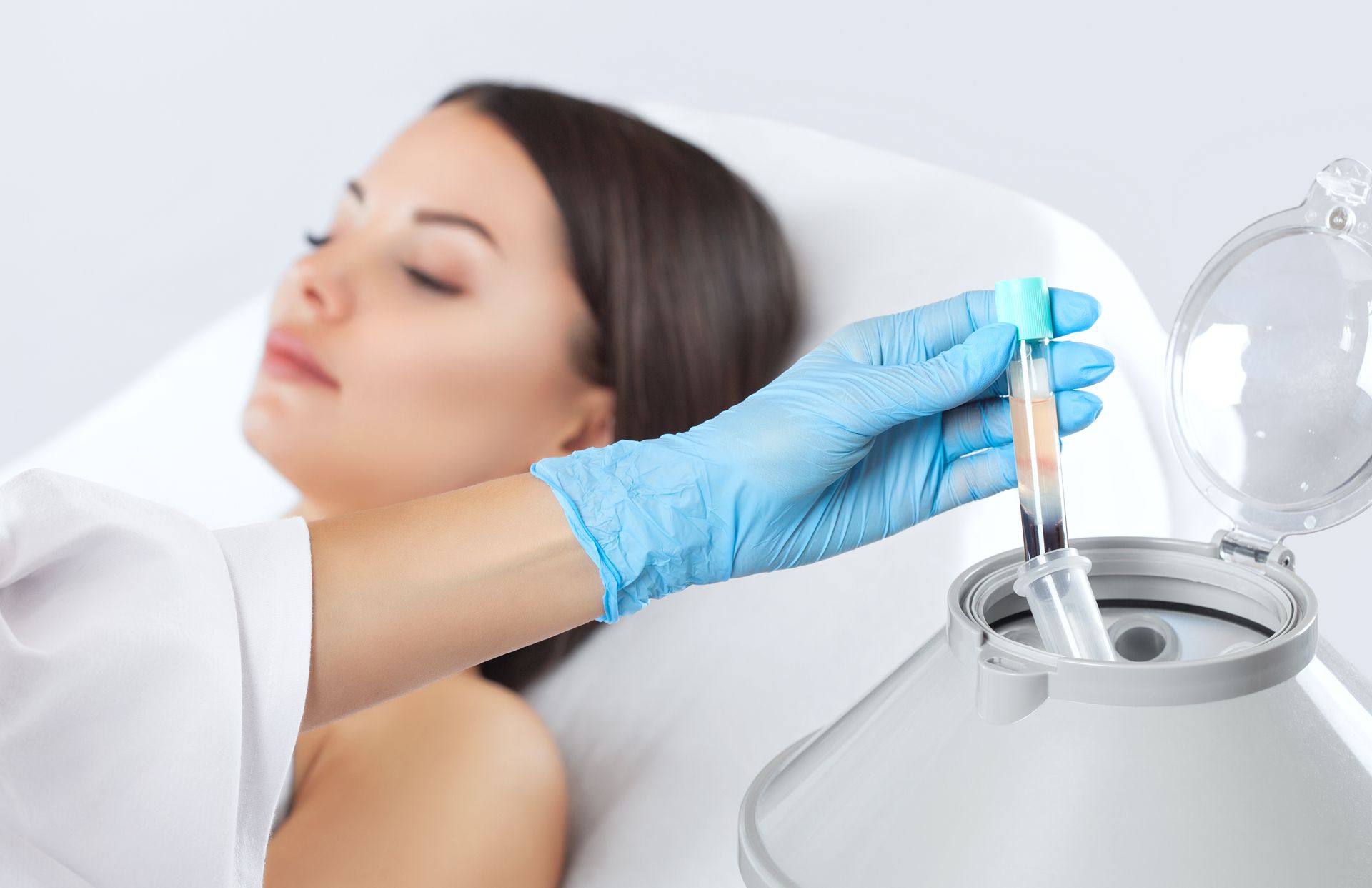
Regenerative medicine has emerged as a revolutionary field in healthcare, offering solutions for treating various medical conditions by harnessing the body's natural healing abilities. Platelet-rich plasma (PRP) and platelet-rich fibrin (PRF) are two popular treatments within regenerative medicine that have gained widespread attention for their potential to accelerate tissue regeneration and repair injuries. However, despite their similar-sounding names, PRF and PRP differ significantly in terms of composition, preparation process, and therapeutic effects. In this blog, we discuss these two therapies to provide a comprehensive understanding of PRF vs. PRP in regenerative medicine. From exploring the biological mechanisms behind each treatment to analyzing their clinical applications and efficacy, we aim to shed light on how these cutting-edge therapies can benefit patients seeking innovative alternatives for managing their health concerns. The Key Differences of the Composition of PRF vs PRP Platelet-rich fibrin (PRF) and platelet-rich plasma (PRP) are both derived from the patient's own blood, but they have distinct differences in composition. PRF is a second-generation platelet concentrate that contains a higher concentration of growth factors compared to PRP. This is because PRF is a fibrin matrix enriched with platelets, leukocytes, and growth factors. On the other hand, PRP mainly consists of concentrated platelets suspended in plasma. While PRP is effective in promoting healing and tissue repair, it lacks the white blood cells and fibrin present in PRF, which are essential for wound healing and immune response regulation. Understanding these differences can help healthcare providers determine which treatment option is best suited for each individual patient based on their specific needs and desired outcomes. How PRF Differs from PRP During the Preparation Process PRF: Platelet-Rich Fibrin (PRF) involves a more natural way of preparing the regenerative material. The blood sample is spun at a lower speed compared to PRP, allowing for the separation of platelets and growth factors without the need for anticoagulants. This method results in a higher concentration of platelets but may also lead to increased levels of white blood cells. PRP: Platelet-Rich Plasma (PRP), on the other hand, requires the addition of anticoagulants to prevent clotting during centrifugation. It contains a higher concentration of platelets compared to whole blood, but still has a substantial amount of liquid plasma and other components (like white blood cells, red blood cells, and fibrinogen). Both techniques aim to harness the body's healing capabilities by using patient-derived components. However, PRF's slower spinning process is believed to produce a scaffold-like matrix that can stimulate tissue regeneration more effectively than PRP. The Therapeutic Benefits of PRF over PRP Platelet-rich fibrin (PRF) offers longer-lasting therapeutic effects compared to platelet-rich plasma (PRP). Studies have shown that PRF contains higher concentrations of growth factors and cytokines, which contribute to improved tissue regeneration and wound healing. The slow release of these bioactive compounds from PRF leads to sustained benefits over an extended period, making it a more effective treatment option for regenerative purposes. In comparison: Platelet-rich plasma (PRP) provides immediate but shorter-lived benefits due to its rapid release of growth factors. While both PRF and PRP promote tissue repair, the sustained release of growth factors in PRF results in improved healing outcomes. Clinical Applications of PRF and PRP in Regenerative Medicine Platelet-Rich Fibrin (PRF) delivers a more sustained release of growth factors compared to Platelet-Rich Plasma (PRP). This prolonged release fosters tissue regeneration over an extended period, promoting long-term healing. In contrast, PRP provides a higher concentration of growth factors initially but lacks the sustained release that PRF offers. PRP is commonly used in acute injuries and conditions requiring immediate tissue repair, thanks to its rapid delivery of growth factors. On the other hand, PRF shines in chronic wound healing and cases where long-lasting stimulation for tissue regeneration is necessary. Understanding these distinctions helps healthcare providers tailor regenerative treatments to meet individual patient needs effectively. Let P4 Biologix Provide Regenerative Medicine Solutions At P4 Biologix , you’re backed by over 70 years of expertise in customer service and cutting-edge regenerative medicine. Specializing in advanced PRF and PRP solutions, we’re dedicated to partnering with healthcare professionals to enhance patient healing and deliver reliable, research-driven therapies. Let us help you unlock the future of regenerative medicine with precision and care. With this advanced technology, you can elevate patient outcomes across orthopedics, aesthetics, and regenerative medicine. PRF enhances the benefits of traditional PRP and releases growth factors, supporting extended healing and tissue regeneration. Whether you're aiming to accelerate recovery from injuries, rejuvenate skin, or support hair restoration, P4 Biologix’s regenerative solutions offer a natural, effective approach for improved results and sustained patient satisfaction. Contact us today to learn more about the different treatment options for your patients.
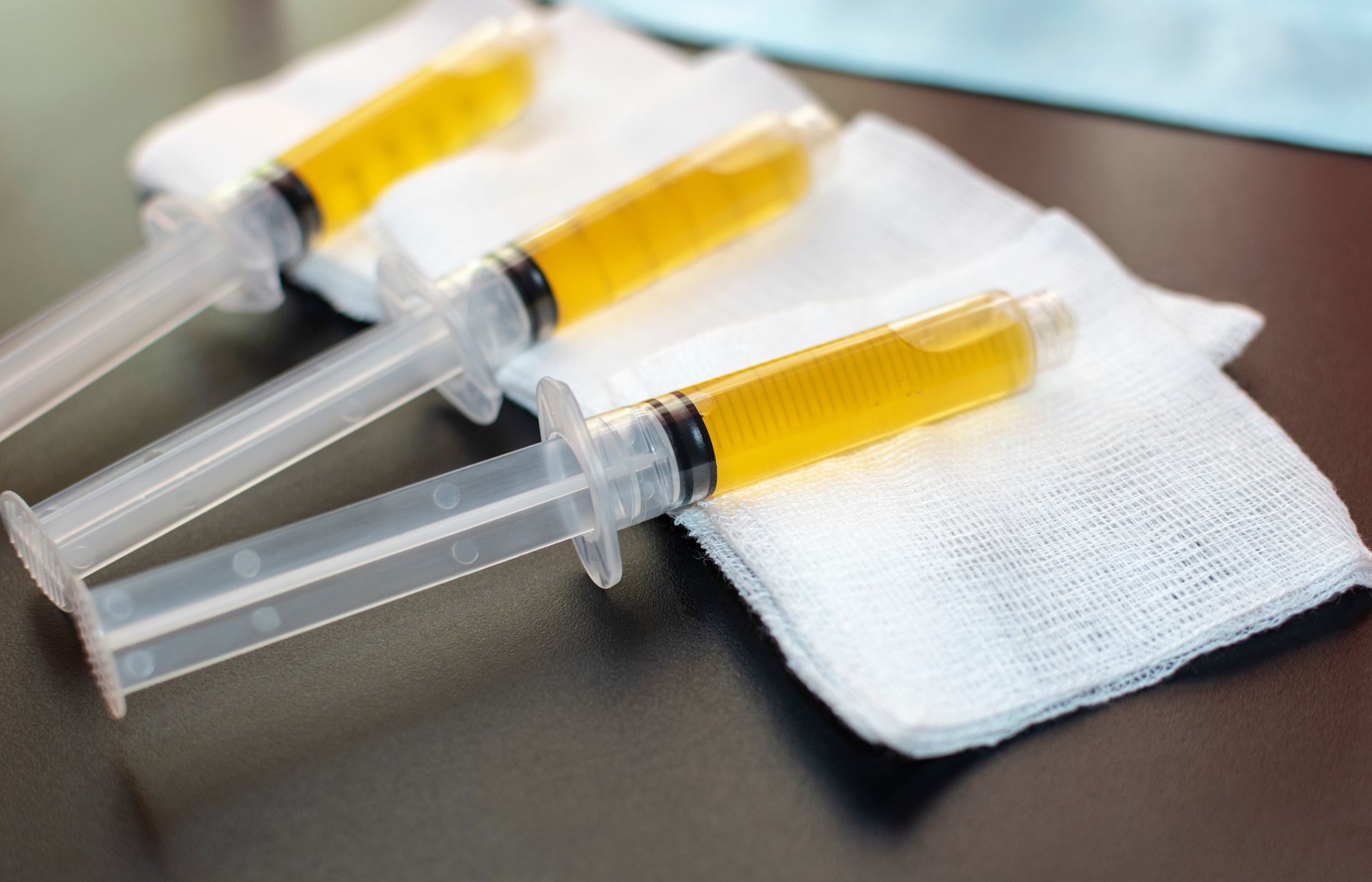
Platelet-Rich Plasma (PRP) therapy has gained significant popularity in recent years for its ability to accelerate the body’s natural healing process. Originally used by athletes to speed up recovery from sports injuries, PRP treatment has since expanded into areas like dermatology for skin rejuvenation, orthopedics for joint pain, and even hair restoration. If you're curious whether PRP treatment might be right for you, understanding who is an ideal candidate is crucial. This blog will cover what PRP therapy is, its benefits, and who is most likely to benefit from it. What is PRP Therapy? Platelet-rich plasma therapy involves extracting a small amount of blood from the patient, then spinning it in a centrifuge to separate the platelets . Platelets are a type of blood cell that aid in healing by releasing growth factors that help repair damaged tissue and stimulate the production of new cells. When injected back into the injured area, these growth factors stimulate healing by promoting cell migration, proliferation, and differentiation. This treatment can be used in various medical fields: Orthopedics : PRP is often used for injuries like tendonitis, ligament sprains, or chronic joint pain. Aesthetics : It's popular for skin rejuvenation treatments (e.g., the "vampire facial") and reducing fine lines and wrinkles. Hair Restoration : PRP injections are increasingly used to treat hair loss by stimulating hair follicles. While PRP is considered safe because it uses your own blood, not everyone is a perfect candidate for the therapy. Below are the conditions and characteristics that make someone a good candidate for PRP treatment. Ideal Candidates for PRP Treatment Individuals with Mild to Moderate Tissue Damage People suffering from mild to moderate injuries or degenerative conditions may benefit most from PRP therapy. Whether it’s a chronic issue like osteoarthritis or an acute injury like a tendon strain, PRP can help accelerate healing and reduce pain. For those dealing with mild joint or soft tissue issues, PRP is often a good alternative to more invasive treatments like surgery. However, in cases of severe tissue damage or advanced degenerative diseases, PRP may not be enough on its own. Your doctor might recommend it as a complementary treatment to physical therapy or even surgery. Athletes with Sports Injuries Athletes who experience sprains, tendonitis, or muscle tears can be good candidates for PRP therapy. The treatment has been particularly successful in speeding up recovery from injuries like tennis elbow, Achilles tendonitis , and rotator cuff tears. Since PRP harnesses the body’s own healing processes, it can reduce downtime and get athletes back to their sport sooner. However, it’s important for athletes to consult with a sports medicine specialist to determine if PRP is appropriate for their specific injury. People with Early-Stage Hair Loss PRP therapy has shown promise in treating androgenic alopecia (pattern hair loss) in both men and women. Ideal candidates are those in the early stages of hair thinning, where the follicles are still present but underperforming. PRP injections into the scalp can help rejuvenate these follicles and stimulate new hair growth. For individuals experiencing complete baldness, PRP may not be as effective since it cannot create new hair follicles. However, in the early to moderate stages of hair loss, PRP can be an effective non-surgical solution. Patients Looking for Skin Rejuvenation PRP is often used in dermatology for cosmetic purposes, particularly for facial rejuvenation. It is a popular choice for individuals looking to reduce the appearance of wrinkles, fine lines, acne scars, and uneven skin tone. The treatment stimulates collagen production, which helps improve skin texture and elasticity. The best candidates for PRP facial treatments are those with mild to moderate signs of aging or skin damage. Because PRP encourages your body to produce collagen over time, results can take weeks to months to fully appear, making it ideal for people seeking gradual, natural-looking improvement. Patients Wanting to Avoid Surgery PRP therapy offers a less invasive alternative to surgery, which makes it an appealing option for individuals looking to avoid the risks and long recovery times associated with surgical procedures. This is especially true in the case of joint or tendon injuries, where surgery might otherwise be the next step if conservative treatments like physical therapy and medications have failed. PRP can be a bridge between more traditional, non-invasive therapies and surgery, providing significant pain relief and tissue repair in some cases without going under the knife. Who Should Avoid PRP Therapy? While PRP therapy is generally safe, certain people may not be good candidates for the treatment. You might want to avoid PRP if you fall into any of these categories: Severe Health Conditions : Individuals with conditions like cancer, liver disease, or blood disorders may not be suitable candidates for PRP treatment. Blood or Platelet Disorders : People with chronic conditions affecting blood clotting or platelet function may not be able to receive PRP therapy. Active Infections : If you have an infection at the treatment site, PRP injections may need to be postponed until the infection clears. Final Thoughts About PRP Treatments PRP therapy can be a fantastic option for individuals dealing with mild to moderate tissue damage, early-stage hair loss, or skin aging. Athletes with sports injuries and those looking for non-invasive treatment options can also benefit from it. However, it’s essential to consult with a healthcare provider to determine if you’re an ideal candidate for PRP therapy based on your specific condition and health status. The best way to find out if PRP is right for you is to schedule a consultation with a medical professional who specializes in this treatment. They can assess your unique situation and help you make an informed decision about whether PRP is the right path for you. Let P4 Biologix Supply Top-Notch Regenerative Medicine Products for Your Patients Elevate the level of care you provide to your patients by partnering with P4 Biologix for top-notch regenerative medicine products. Our innovative solutions are designed to enhance healing, improve patient outcomes, and support your practice with the highest standards of quality and performance. Whether you're treating orthopedic injuries, chronic pain, or soft tissue damage, P4 Biologix offers the cutting-edge tools you need. Contact us today to learn how our regenerative medicine products can transform your patient care and take your practice to the next level!
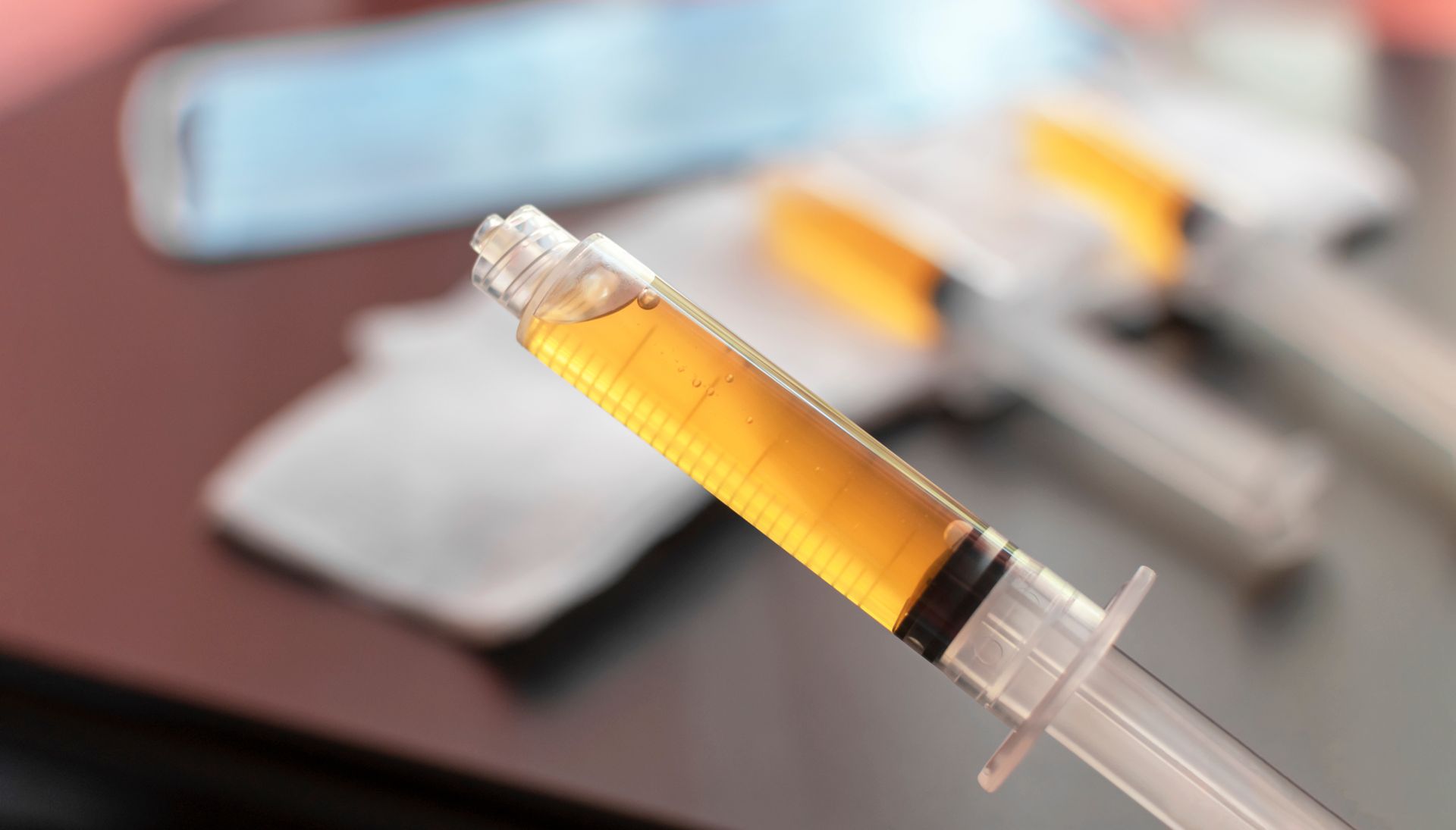
In the field of regenerative medicine and dentistry, Platelet-Rich Fibrin (PRF) has emerged as a powerful tool with a wide range of applications. From accelerating wound healing to promoting tissue regeneration, PRF offers a natural and effective solution for various medical and dental procedures. In this blog, we will look into the science behind PRF, its unique properties, and how it can be utilized to enhance patient outcomes. Whether you are a healthcare professional looking to incorporate PRF into your practice or a patient seeking alternative treatment options, this blog aims to explain PRF and showcase its potential as a cutting-edge therapeutic approach. The Science Behind Platelet-Rich Fibrin Platelet-rich fibrin (PRF) is a revolutionary treatment derived from the patient's own blood, making it safe and natural. Through a process called centrifugation , the blood components are naturally separated into two layers. Red blood cells will lie at the bottom of the tube and the golden plasma (PRF) will lie at the top of the tube. Centrifuging a PRF tube will naturally create a fibrin matrix within the plasma which releases growth factors over time that stimulate tissue regeneration and repair. Natural Healing Process: PRF harnesses the body's innate ability to heal itself by delivering concentrated platelets and white blood cells directly to the site of injury or damage. Bioactive Properties: The growth factors in PRF promote cell proliferation, enhance vascularization, and accelerate tissue healing. This leads to faster recovery times and superior outcomes for patients undergoing various dental procedures. Versatile Applications: From bone grafting and sinus lifts to treating soft tissue injuries, PRF has become a go-to solution in modern dentistry due to its effectiveness and minimal risk of adverse reactions. Advantages of Using PRF in Medical and Dental Procedures Enhanced Healing: Platelet-rich fibrin (PRF) contains high concentrations of platelets and growth factors that stimulate tissue regeneration, accelerating the healing process in both medical and dental procedures. Reduced Risk of Infection: The antimicrobial properties of PRF help to prevent infection at the surgical site, minimizing the risk of postoperative complications . Biocompatibility: PRF is derived from the patient's own blood, making it a safe and biocompatible treatment option with minimal risk of adverse reactions or rejection. Applications of PRF in Regenerative Medicine and Dentistry Platelet-Rich Fibrin (PRF) has a wide range of applications in both regenerative medicine and dentistry due to its ability to accelerate healing and promote tissue regeneration. Here’s a breakdown of its uses: Regenerative Medicine : Platelet-rich fibrin (PRF) is being widely used in regenerative medicine due to its ability to accelerate the healing process. In procedures such as bone grafting, PRF can promote tissue regeneration and enhance the overall success rate of the treatment. Dentistry : Dentists are increasingly incorporating PRF into various dental procedures for its potential benefits. From socket preservation after tooth extraction to promoting faster soft tissue healing following gum surgeries, PRF offers a natural solution that supports optimal oral health outcomes. Wound Healing : One of the significant applications of PRF is in wound healing. The growth factors found in PRF help facilitate tissue repair, making it an effective option for promoting quicker recovery following surgical interventions or injuries. Hair Restoration: PRF has gained popularity in hair restoration therapies, where it is injected into the scalp to stimulate hair follicle growth. The growth factors help increase blood supply and encourage hair regrowth, especially for patients with thinning hair. Facial Rejuvenation : Injectable PRF can help improve a patient's skin tone and texture, reduce scarring, build collagen, and enhance volume making PRF a popular alternative to traditional fillers. Tips and Best Practices for Incorporating PRF into Your Practice Education is Key : Before incorporating Platelet-Rich Fibrin (PRF) into your practice, ensure you and your team are well-educated on the benefits, procedures, and application of PRF. Stay up-to-date with the latest research and techniques in the field to provide optimal care for your patients. Patient Consultation : When discussing PRF with patients, clearly communicate its advantages, potential outcomes, and any associated risks. Take the time to answer any questions they may have to establish trust and confidence in the treatment. Efficient Workflow : Streamline your practice's workflow by integrating PRF procedures seamlessly into existing treatments. Develop protocols that outline step-by-step processes for preparing PRF materials and administering them effectively to maximize efficiency in patient care. Contact P4 Biologix for State-of-the-Art Platelet-Rich Fibrin Products At P4 Biologix , we have a collective experience of more than 70 years in customer service and medicine to help take your practice to the next level. Our Platelet-Rich Fibrin (PRF) products are designed to improve healing and optimize patient outcomes, making them the trusted choice for professionals in the medical and dental fields. Take advantage of our innovative PRF solutions to elevate your practice and achieve superior results. Contact us today to learn more and place your order.
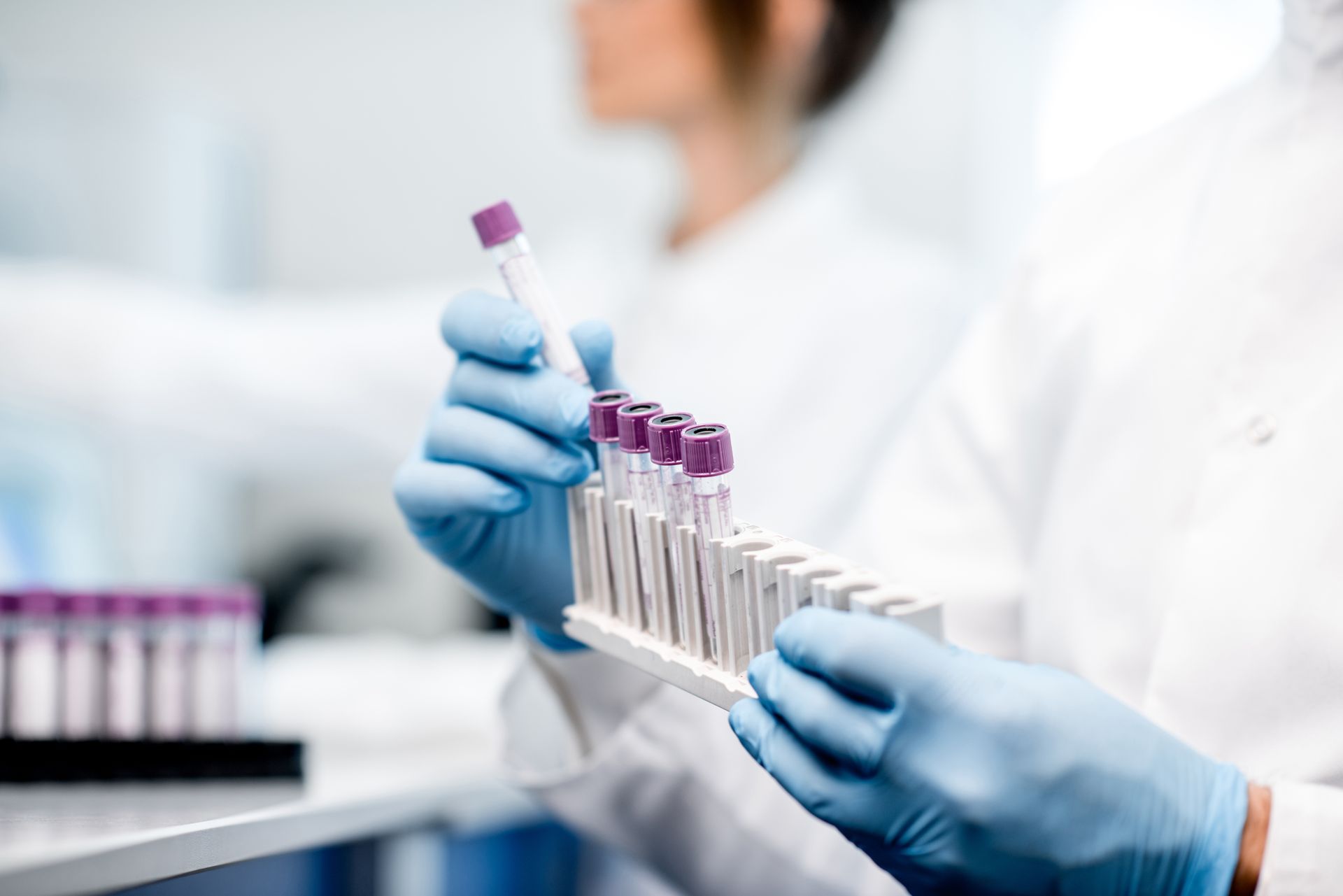
Platelet-rich plasma (PRP) therapy is a revolutionary treatment that uses the healing power of our own blood to regenerate and repair damaged tissues. This procedure has gained widespread attention in recent years for its ability to accelerate tissue regeneration, reduce pain, and improve overall function in a wide range of medical conditions. From orthopedic injuries to skin rejuvenation, PRP therapy has shown remarkable results in promoting healing and restoring vitality to the body. In this blog, we will explore the science behind PRP therapy, its applications across various medical fields, and how it is changing the landscape of modern medicine. The Science Behind Platelet-Rich Plasma Therapy Platelet-rich plasma therapy involves extracting a small amount of blood from the patient, then spinning it in a centrifuge to separate the platelets . These platelets contain growth factors that play a crucial role in tissue repair and regeneration. When injected back into the injured area, these growth factors stimulate healing by promoting cell migration, proliferation, and differentiation. Studies have shown that platelet-rich plasma can enhance the body's natural healing process by delivering a concentrated dose of growth factors directly to the site of injury. This targeted approach accelerates tissue repair and reduces inflammation, making it an effective treatment for various musculoskeletal conditions such as tendon injuries, osteoarthritis, and ligament tears. As more research is conducted on this innovative therapy, its potential benefits continue to revolutionize the field of regenerative medicine. Applications of PRP Therapy in Orthopedic Injuries Faster Healing: PRP therapy has been found to significantly accelerate the healing process for orthopedic injuries such as tendonitis, ligament sprains, and muscle strains. The high concentration of platelets in PRP releases growth factors that promote tissue regeneration and repair. Reduced Inflammation: Patients with orthopedic injuries often experience inflammation, which can delay recovery and worsen symptoms. PRP therapy helps reduce inflammation by suppressing inflammatory markers and promoting a more controlled healing response. Improved Tissue Quality: By enhancing collagen production and increasing blood flow to the injured area, PRP therapy improves the quality of the repaired tissue. This leads to better overall functionality and reduced risk of re-injury in patients recovering from orthopedic conditions. PRP Therapy for Joint Pain: A Promising Treatment Option Platelet-Rich Plasma (PRP) therapy has emerged as a promising treatment option for joint pain, offering patients a non-surgical alternative to traditional methods. By harnessing the natural healing properties of platelets found in the patient's own blood, PRP injections can promote tissue repair and reduce inflammation in affected joints. This innovative approach has shown significant potential in managing conditions such as osteoarthritis, tendonitis, and ligament injuries with minimal risk of adverse reactions. Benefits of PRP Therapy for Joint Pain Non-Invasive: Unlike surgery, PRP therapy is minimally invasive, involving simple injections that are typically well-tolerated by patients. Natural Healing: By using the patient's own blood components to stimulate healing, PRP therapy supports the body's innate ability to repair damaged tissues. Personalized Treatment: Each PRP injection is tailored to meet the individual needs of the patient, ensuring targeted relief for specific joint issues. The Benefits of PRP Injections for Skin Rejuvenation Skin Rejuvenation: PRP injections have been shown to stimulate collagen production , improve skin texture, and enhance overall skin tone. This can help reduce the appearance of fine lines, wrinkles, and acne scars, leading to a more youthful and radiant complexion. Natural Healing: PRP is derived from your own blood, making it a natural and safe treatment option for skin rejuvenation. By harnessing the healing properties of platelets and growth factors found in your blood, PRP injections promote tissue regeneration and repair without the use of synthetic chemicals or foreign substances. Minimal Downtime: Unlike invasive surgical procedures, PRP injections for skin rejuvenation require minimal downtime with relatively few side effects. Patients can typically resume their daily activities immediately after treatment, making it a convenient option for those seeking effective yet low-maintenance skincare solutions. Let P4 Biologix Enhance Treatment Outcomes for Your Patients with PRP Therapy Take your patient care to the next level with PRP from P4 Biologix . By utilizing the body’s natural healing properties, PRP can accelerate recovery, reduce pain, and improve overall treatment outcomes. Whether you’re looking for skin rejuvenation, aesthetics injections, joint and chronic pain, or more, PRP therapy offers a cutting-edge solution. P4 Biologix offers products such as PRP tubes and kits, PRF tubes, and centrifuges to medical doctors and nurses to help improve treatment outcomes. Contact us today to start incorporating this powerful, regenerative treatment into your practice and provide your patients with the advanced care they deserve.
STay Up to date

